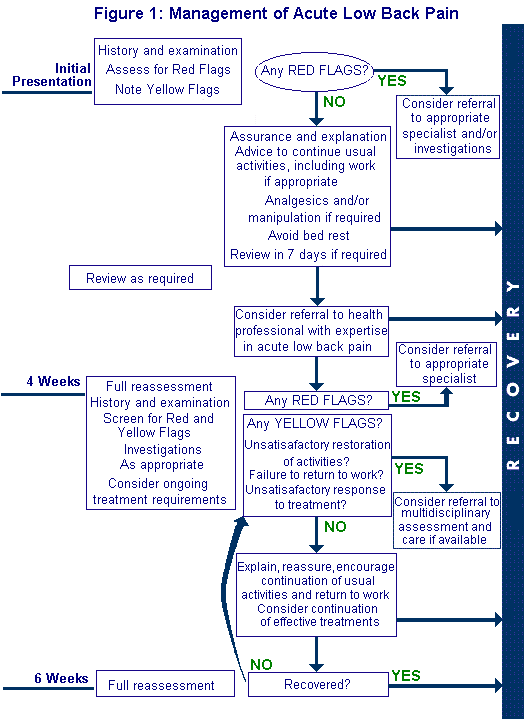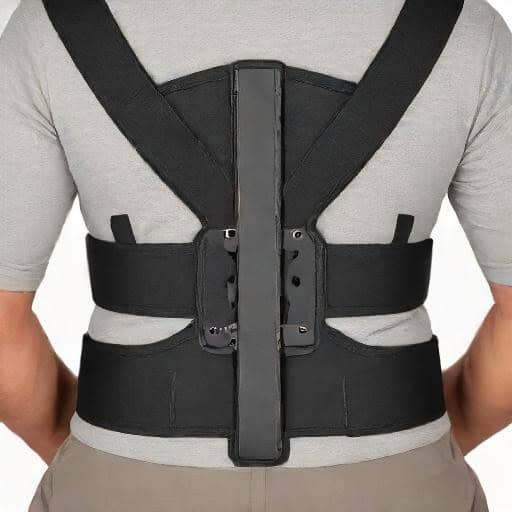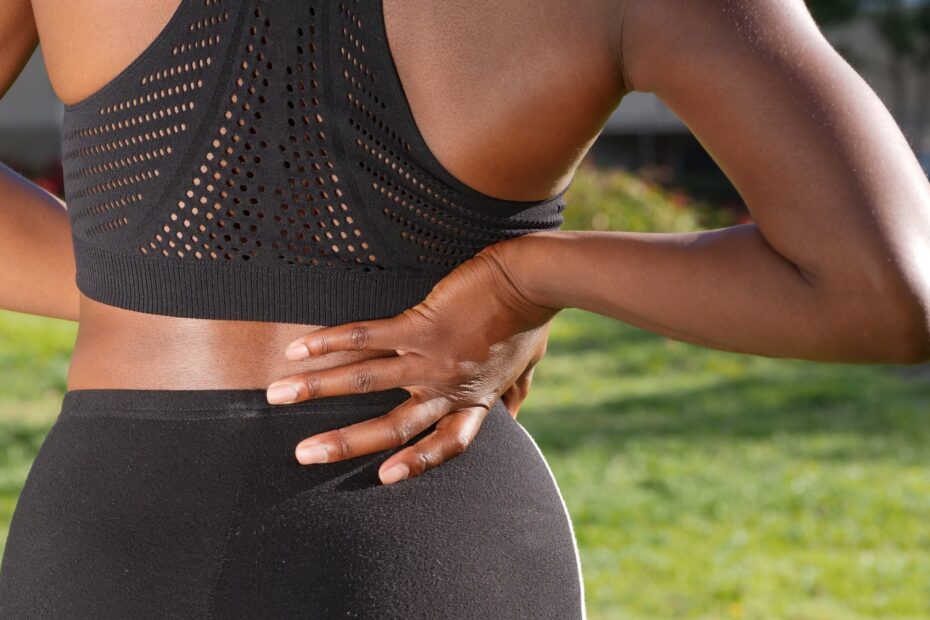Back pain affects many of us every day, making even simple tasks feel overwhelming. An estimated $200 billion is spent annually on treatments, highlighting the urgency for effective solutions.
Our guide offers holistic back pain relief strategies, including yoga and Pilates for back pain, chiropractic care, and more. Discover relief today; keep reading.
Common Causes of Back Pain
Poor posture, excess weight, muscle changes, stress, and hormonal shifts contribute to back pain. Identifying and addressing these factors can lead to significant relief.
Posture
Sitting or standing the right way plays a big part in avoiding back pain. Good posture means aligning your body so no single part is under too much stress. When you slouch or hunch over, your spine feels extra pressure.
This can lead to chronic low back pain over time. Keeping your back straight and shoulders back helps spread out the strain.
Improving your posture does more than just prevent pain; it also boosts spinal health. Simple changes like adjusting the height of your chair, using ergonomic furniture, and doing exercises for back pain can make a big difference.
Yoga and Pilates are especially good for strengthening muscles that support proper posture. They teach you how to hold yourself in ways that protect your back, offering relief from discomfort and promoting overall wellness.
Weight
Excessive weight puts added stress on the spine, leading to chronic back pain. Embracing a healthy lifestyle with regular exercise and a balanced diet can help manage and reduce low back pain caused by excessive weight.
Research shows that maintaining a healthy body mass index (BMI) reduces the risk of developing chronic back pain. Additionally, adopting an active lifestyle not only helps in managing weight but also strengthens the muscles supporting the spine, alleviating pressure on the lower back.
The detrimental impact of excess weight on back health cannot be overstated. It is crucial for those experiencing chronic low back pain to address their weight as part of their holistic approach to finding relief.
Yoga, Pilates, and tai chi are effective exercises that aid in both weight management and easing back pain symptoms Keywords: Chronic low back pain relief, Exercise for back pain, Holistic approach to back pain relief.
Muscle Changes
To address low back pain, one should consider the impact of muscle changes. These changes may result from a sedentary lifestyle, aging, or lack of exercise. In such cases, physical therapy and targeted exercises can strengthen muscles to provide better support for the spine and alleviate discomfort.
Additionally, incorporating yoga or Pilates into the routine can improve flexibility and promote overall back health.
Remember that muscle changes contribute significantly to low back pain – understanding this connection is vital when seeking effective relief strategies. By focusing on keywords like “Yoga for back pain,” “Pilates for back pain relief,” and “Physical therapy,” individuals can take proactive steps towards addressing their back discomfort through specific activities tailored to enhance muscle strength and flexibility.
Stress
Stress can be a significant factor contributing to back pain. When we are stressed, our muscles tend to tense up, often leading to discomfort and pain in the back. It is essential to find effective ways to manage and reduce stress levels in order to alleviate back pain symptoms.
Techniques such as yoga, tai chi, massage therapy, and relaxation exercises can be helpful in relieving both stress and the resulting back discomfort.
The impact of stress on back pain is substantial; therefore, it’s crucial for individuals dealing with this issue to address their stress levels effectively. Implementing mindfulness practices like yoga and tai chi can not only help reduce stress but also provide relief from back pain.
These holistic approaches play a vital role in managing both stress and its physical effects on the body, ultimately contributing to improved overall well-being.
Hormones
Hormones play a significant role in back pain, particularly for women. Fluctuations in estrogen levels during menstruation, pregnancy, and menopause can influence the severity of back pain.
Studies show that hormonal changes can affect pain perception and sensitivity, potentially leading to an increase in low back pain symptoms. Understanding the impact of hormones on back pain is crucial for developing tailored treatment plans that address these specific triggers.
Incorporating holistic approaches like yoga and tai chi for back pain relief can help regulate hormone levels and alleviate discomfort associated with hormonal fluctuations. Additionally, considering alternative medicine options and stress management techniques presents an opportunity to address hormonal influences on back pain effectively.

Tips for Managing Low Back Pain
Keep moving to avoid stiffness and improve circulation. Use heat or ice as per your doctor’s or physiotherapist advice for soothing relief.
Once the pain has been diagnosed, you can decide on a treatment plan. Physical therapists can help you determine what exercises are best for you.
Keep moving
Regular physical activity is crucial for managing low back pain. Movement helps strengthen muscles, improves flexibility, and enhances blood flow to the affected area, promoting faster healing.
Engaging in activities such as walking, swimming, or yoga can effectively alleviate discomfort and prevent future episodes of low back pain. Exercise also aids in weight management, reducing the strain on the lower back.
Getting at least 150 minutes of moderate-intensity exercise each week can significantly contribute to relieving low back pain and improving overall well-being.
To manage low back pain effectively, it’s important to keep moving regularly and incorporate physical activity into your daily routine. This not only supports recovery but also strengthens your body against future occurrences of discomfort.
Use heat or ice
Transitioning from keeping the body moving to finding relief through temperature therapy, applying heat or ice can help alleviate back pain. Heat increases blood flow and relaxes tight muscles, aiding in pain relief.
On the other hand, ice reduces inflammation and numbs the area.
Applying heat or ice is a recommended method for managing back pain. It offers therapeutic benefits by increasing blood flow or reducing inflammation to help relieve discomfort. The use of these methods should be tailored towards individual needs and preferences for optimal relief, making it an essential aspect of holistic back pain treatment strategies.
Get better sleep
Improve your sleep for better back pain relief. Yoga and Pilates can help with sleep and alleviate back pain as well. A comprehensive approach to managing back pain includes addressing sleep quality.
Creating a comfortable sleeping environment is crucial in alleviating chronic low back pain, increasing energy levels, enhancing overall mood, and improving productivity during the day.
Consider incorporating essential oils or calming sounds into your bedtime routine to enhance relaxation. Investing in a good mattress that provides sufficient support for your spine is another important step toward better sleep and reduced lower back discomfort.
Explore the benefits of meditation before bed for overall relaxation and improved sleep quality.

Improve posture
Transitioning from getting better sleep to improving posture, maintaining good posture is crucial for preventing back pain. Yoga and Pilates for back pain relief can effectively improve posture by strengthening core muscles.
Additionally, practicing proper ergonomics at work and home, as well as using posture correction aids like braces, can help alleviate strain on the back and reduce discomfort. Yoga for back pain relief combined with posture correction techniques offers a holistic approach to managing low back pain.
Eat healthy foods
To support back pain relief, consuming healthy foods is crucial. Proper nutrition can aid in reducing inflammation and promoting healing. Incorporating a balanced diet with fruits, vegetables, lean proteins, and whole grains can help manage weight and provide essential nutrients for overall health.
Additionally, certain foods such as fatty fish rich in omega-3 fatty acids or turmeric with its anti-inflammatory properties can specifically target back pain.
Ensuring the intake of healthy foods plays a significant role in managing back pain effectively. A diet consisting of essential vitamins and minerals strengthens the body’s natural resilience against chronic conditions like low back pain.
Embracing a diet abundant in antioxidants not only supports overall well-being but also aids in mitigating the discomfort associated with this condition. Including specific superfoods like blueberries or spinach encourages an internal environment conducive to combating inflammation which is vital for relieving back pain.

Practice relaxation techniques
After eating healthy foods to manage back pain, practicing relaxation techniques like deep breathing, meditation, and yoga can further alleviate discomfort. Breathing exercises which focus on inhaling and exhaling deeply can reduce stress hormones in the body, while yoga and meditation have been shown to decrease chronic pain symptoms.
These techniques are essential components of a holistic approach to back pain relief, offering natural and effective methods for managing discomfort without relying solely on medication or invasive procedures.
Practicing relaxation techniques is an integral part of managing back pain effectively. Deep breathing, meditation, and yoga are proven methods that can significantly reduce stress hormones in the body, alleviating chronic pain symptoms naturally.
Incorporating these techniques into your daily routine alongside other treatment options can provide comprehensive relief from back pain and contribute to overall well-being.

Low Back Bracing
When to wear a back brace and its pros and cons are important considerations. It’s crucial to choose the right type of low back brace for effective relief.
When to wear a brace
Back braces can be beneficial for those with chronic low back pain, particularly when the discomfort interferes with daily activities. Orthopedic experts recommend considering a brace if you experience prolonged periods of sitting or standing, as well as during physical work or heavy lifting.
Additionally, individuals who have undergone spinal surgery often find wearing a brace supportive during their recovery process.
The decision to wear a low back brace should involve consultation with a healthcare professional who specializes in pain management. It is advisable to consider this option if traditional treatments such as medication and exercise have not provided adequate relief.
While bracing may offer substantial support, it’s essential to ensure that the type of brace chosen aligns with your specific back condition and lifestyle needs for optimal effectiveness in managing your back pain.
Pros and cons of bracing
Back braces can provide stability and support for the lower back, relieving pain and promoting healing. They are a non-invasive treatment option that can help individuals remain active while recovering from an injury or managing chronic back pain.
Some people find that wearing a brace gives them confidence to engage in physical activities or perform tasks that they may have been avoiding due to discomfort. However, prolonged use of a brace may lead to muscle atrophy, dependency on the brace for support, and potential skin irritation if not fitted properly.
It is important to consult with a healthcare professional before using a back brace long-term.
Low back bracing offers both benefits and drawbacks in managing back pain. While it provides support and relief, extended use can result in muscle weakness and reliance on the brace.
Proper assessment by a healthcare provider is crucial before starting long-term use.
Types of low back braces
Now let’s discuss the types of low back braces. There are several options available such as corsets, rigid braces, and elastic supports. The corset brace provides compression while the rigid brace limits movement and offers support for more severe pain or post-surgery recovery.
Elastic supports are flexible and provide mild compression for daily activities.
It is important to choose a brace that suits your needs and lifestyle, whether it be for lower back pain relief, sciatica treatment, or neurological exam assistance. Consulting with a healthcare professional can help determine which type of low back brace is best suited for your specific condition.
How to choose the right brace
To choose the right brace for low back pain relief, it is important to consider the type of support needed. Firstly, assess whether a rigid or flexible brace is suitable based on the level of activity.
Then, take into account the fit and comfort of the brace; ensuring it provides sufficient support without causing discomfort. Additionally, consider any specific features required such as adjustable straps or lumbar pads to target different areas of pain.
It’s vital to consult a healthcare professional for personalized advice and ensure that the chosen brace aligns with your treatment plan.
Conclusion
In conclusion, this comprehensive guide provides practical tips and solutions for managing low back pain. It also explores the benefits of using low back braces to alleviate discomfort.
Understanding the causes and treatments can support individuals in finding relief and improving their quality of life. By implementing these strategies, individuals can take proactive steps towards addressing their back pain effectively.
